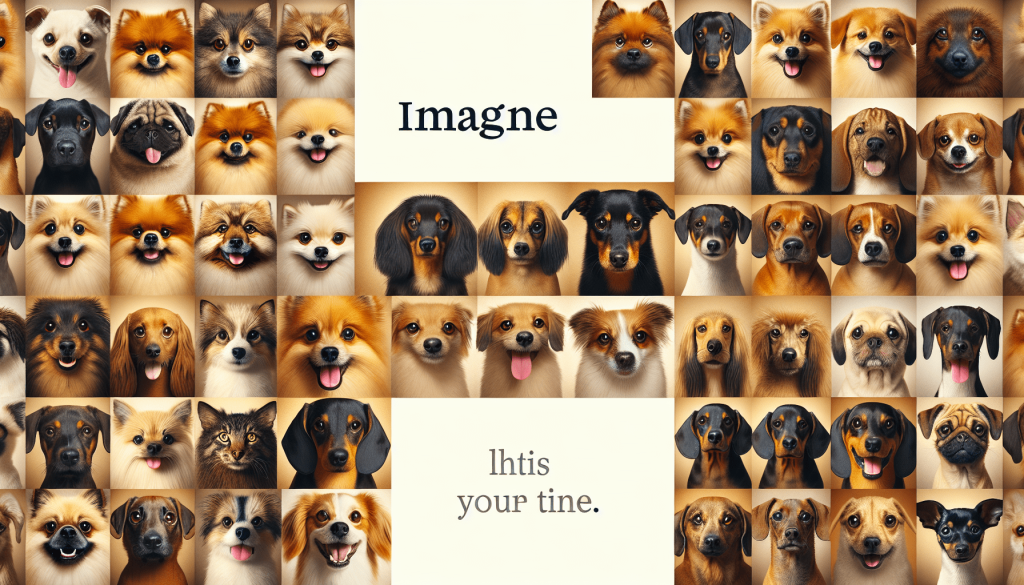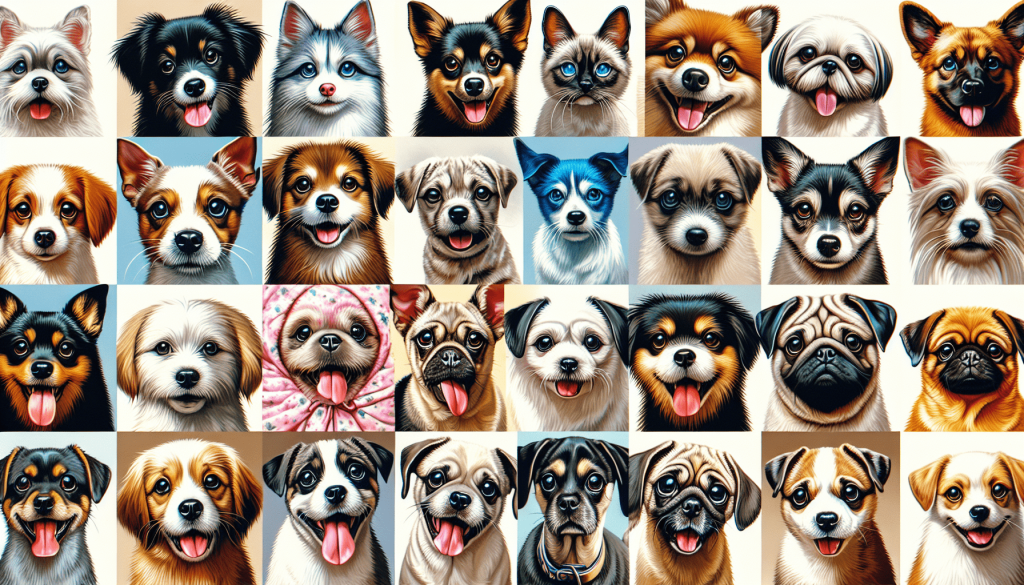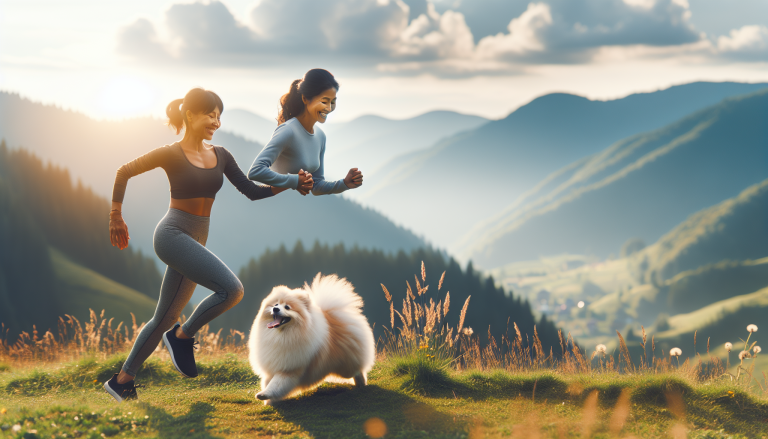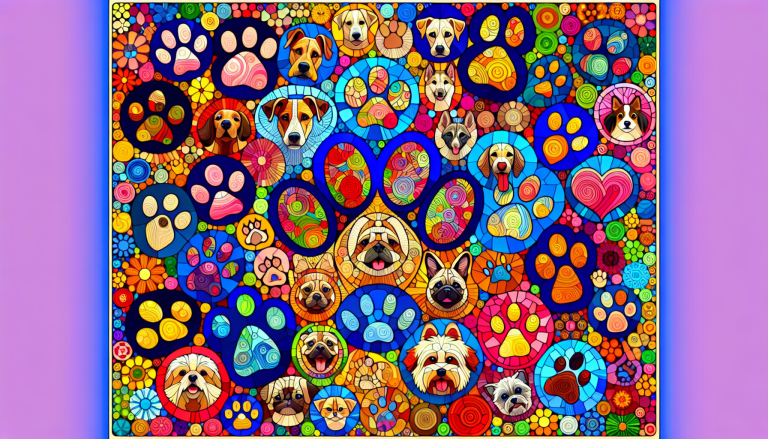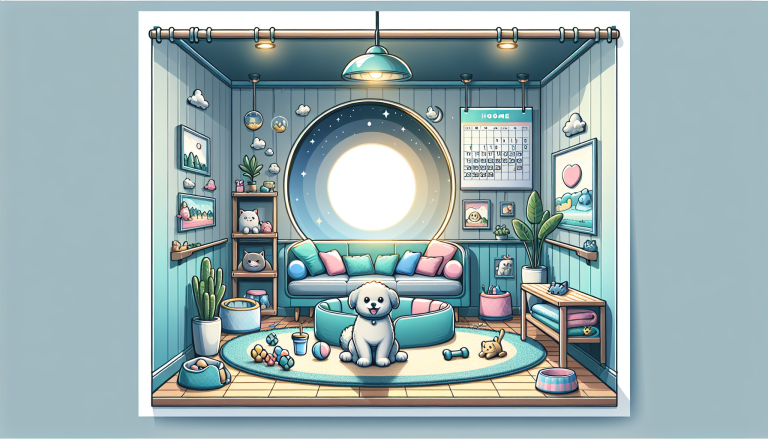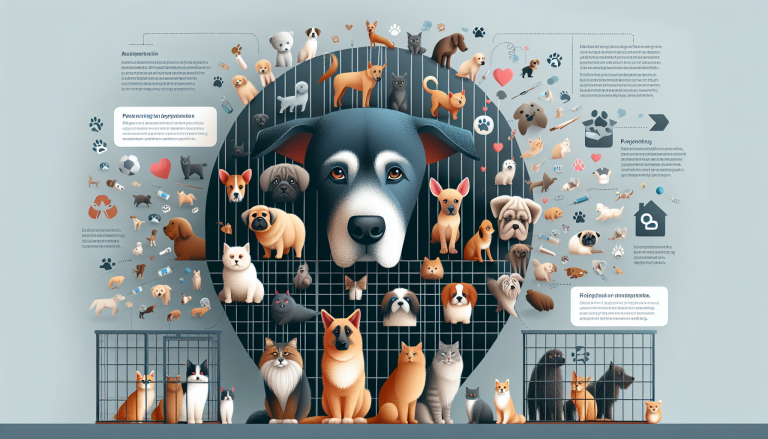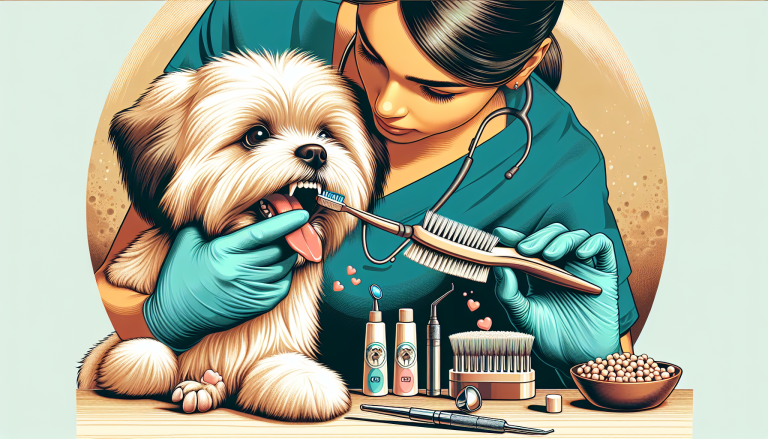Are you looking for the perfect furry companion to bring joy and companionship to your life? Look no further! In this article, we will explore the top 10 small dog breeds that are ideal for being your loyal and loving companion pets. Whether you live in a small apartment or have a busy lifestyle, these pint-sized pooches will bring endless happiness and love into your home. So, get ready to meet some adorable and friendly small dog breeds that will steal your heart in an instant!
Table of Contents
Toggle1. Chihuahua
Origins and History
The Chihuahua, named after the Mexican state of Chihuahua, is believed to be one of the oldest and smallest dog breeds in the world. It is thought to have descended from the Techichi, a companion dog that dates back to the ancient Toltec civilization in Mexico. Chihuahuas were highly regarded by the Aztecs and were often sacrificed and buried alongside their owners to accompany them into the afterlife.
Size and Appearance
Chihuahuas are tiny dogs, typically weighing between 2 to 6 pounds and standing just 5 to 8 inches tall. They have a compact and sturdy body with a rounded skull and erect ears. Chihuahuas come in two coat varieties: smooth coat and long coat. The smooth coat is short and glossy, while the long coat is silky and can be slightly wavy. They can be found in a variety of colors, including fawn, black, white, chocolate, and many more.
Temperament and Personality
Despite their small size, Chihuahuas have big personalities. They are known to be feisty, courageous, and confident. Chihuahuas are fiercely loyal and protective of their families, often forming a strong bond with their owners. They can be quite wary of strangers and may exhibit aggressive behavior if not properly socialized. However, with early socialization and training, Chihuahuas can be loving, affectionate, and playful companions.
Exercise and Training Needs
Chihuahuas are active little dogs that require regular exercise to maintain their health and prevent obesity. Daily walks, playtime, and interactive toys can help fulfill their exercise needs. Due to their small size, they can also get their exercise indoors if the weather doesn’t permit outdoor activities. Additionally, mental stimulation through training and puzzle toys is essential to keep their intelligent minds engaged.
Care and Grooming Requirements
Chihuahuas have relatively low grooming needs. The smooth coat variety requires minimal grooming, needing just occasional brushing to remove any loose hairs. Long coat Chihuahuas, on the other hand, require more attention. Their long fur is prone to tangles and matting, so regular brushing is necessary to keep it looking neat and healthy. Both coat varieties benefit from regular dental care and nail trims. Chihuahuas are also known to be sensitive to cold weather, so providing them with warm clothing during colder months is recommended.
2. Pomeranian
Origins and History
The Pomeranian, sometimes referred to as “Pom,” is a small dog breed that originated in the Pomerania region, which is now part of Poland and Germany. They are descendants of larger sled-pulling dogs used in the Arctic. Pomeranians gained popularity during the 18th century when Queen Victoria of England fell in love with the breed and started breeding them to a smaller size.
Size and Appearance
Pomeranians are small dogs, typically weighing between 3 to 7 pounds and standing just 6 to 7 inches tall. Despite their small size, they have a compact and sturdy body. Pomeranians have a double coat with a thick, fluffy overcoat and a soft, dense undercoat. They come in a variety of coat colors, including orange, black, white, cream, blue, and many more.
Temperament and Personality
Pomeranians are known for their friendly and extroverted personalities. They are confident little dogs with a curious nature. Pomeranians are highly alert and make excellent watchdogs, often barking to alert their owners of any potential danger. They are also known to be affectionate and loyal to their families, eager to please and be by their side. However, they can have a tendency to be stubborn, so early and consistent training is important.
Exercise and Training Needs
Despite their small size, Pomeranians are energetic dogs that require regular exercise to prevent weight gain and keep them mentally stimulated. Daily walks, playtime, and interactive toys are necessary to meet their exercise needs. Pomeranians also excel in various activities such as agility, obedience, and trick training. They are intelligent dogs and thrive on mental stimulation.
Care and Grooming Requirements
Pomeranians have a profuse double coat that requires regular grooming to keep it looking its best. Daily brushing is recommended to prevent tangles and keep their coats free from debris. Regular baths are essential to maintain their coat’s cleanliness and prevent skin issues. Pomeranians are prone to dental problems, so regular dental care, including teeth brushing, is crucial. Additionally, routine nail trims, ear cleaning, and regular check-ups with a veterinarian are necessary to keep Pomeranians in optimal health.
3. French Bulldog
Origins and History
French Bulldogs, also known as “Frenchies,” have a fascinating history that traces back to the early 19th century in England. They were originally bred as miniature bulldogs and were popular among lace workers in the Nottingham region, who brought them to France during the Industrial Revolution. In France, they gained popularity and were further refined to the breed we know today as French Bulldogs.
Size and Appearance
French Bulldogs are small, muscular dogs with a distinctive appearance. They typically weigh between 16 to 28 pounds and stand about 11 to 12 inches tall. They have a compact and sturdy body with a square-shaped head, a short muzzle, and bat-like ears. French Bulldogs have a short, smooth coat that comes in various colors, including brindle, fawn, white, and pied.
Temperament and Personality
French Bulldogs have a playful and affectionate temperament, making them excellent companion pets. They are known to be social, adaptable, and friendly towards both humans and other animals. French Bulldogs thrive on human companionship and enjoy being a part of the family. They have a great sense of humor, often entertaining their owners with their quirky antics. French Bulldogs are generally well-behaved and can adapt well to different living situations, making them suitable for apartments or houses.
Exercise and Training Needs
While French Bulldogs are not overly active dogs, they still require regular exercise to maintain their weight and overall health. Daily walks and playtime are sufficient to meet their exercise needs. However, due to their brachycephalic (short-nosed) anatomy, French Bulldogs are sensitive to heat and should not be overexerted in hot weather. Training French Bulldogs should involve positive reinforcement methods, as they respond well to praise and treats. They are intelligent dogs and can excel in obedience training.
Care and Grooming Requirements
French Bulldogs have a short coat that is relatively low-maintenance. They shed moderately, so regular brushing with a soft bristle brush can help keep their coat clean and reduce shedding. French Bulldogs are prone to skin allergies, so it’s important to use mild shampoos and avoid harsh chemicals. Their wrinkles and facial folds also require regular cleaning to prevent any infections. It’s crucial to keep their nails trimmed and provide them with proper dental care to avoid dental issues. Regular check-ups with a veterinarian are essential to monitor their overall health.
4. Yorkshire Terrier
Origins and History
Yorkshire Terriers, often referred to as “Yorkies,” originated in 19th-century England, particularly in the county of Yorkshire. They were initially bred to catch rats in the textile mills and coal mines. Yorkshire Terriers gained popularity as fashion accessories among the Victorian elite, thanks to their small size and luxurious coat. Over time, they transitioned from working dogs to beloved companion pets.
Size and Appearance
Despite their small size, Yorkshire Terriers are characterized by their feisty and confident nature. They typically weigh between 4 to 7 pounds and stand about 7 to 8 inches tall. Yorkies have a compact body with a long, silky coat that is steel-blue in color on their body and golden tan on their face. However, their coat can also be trimmed short for ease of maintenance.
Temperament and Personality
Yorkshire Terriers are known for their energetic and adventurous personalities. They are curious and intelligent dogs that thrive on mental stimulation and interaction with their families. Yorkies are loyal and affectionate companions, often forming strong bonds with their owners. While they are generally good with older children, they may not tolerate rough handling well, making them more suitable for households with older or considerate children. Yorkies can be wary of strangers and may alert their owners with their keen sense of hearing.
Exercise and Training Needs
Despite their small size, Yorkshire Terriers require regular exercise to burn off their energy and prevent obesity. Daily walks, playtime, and interactive toys are essential to meet their exercise needs. Yorkies also enjoy mental stimulation through training sessions, as they are highly trainable and eager to please. Teaching them basic obedience commands and engaging them in interactive games can keep their minds sharp.
Care and Grooming Requirements
One of the remarkable features of Yorkshire Terriers is their long and silky coat. Yorkies require daily brushing to prevent tangles and matting, and their coat may require trimming to keep it manageable. Regular baths are necessary to keep their coat clean and free from dirt. It’s important to note that Yorkies have hair instead of fur, making them a good option for people with allergies. Regular dental care is crucial to maintain their oral health, and routine nail trims are necessary. As with any dog, regular visits to the veterinarian are important for their overall well-being.
5. Dachshund
Origins and History
Dachshunds, often affectionately called “wiener dogs” or “sausage dogs,” originated in Germany and have a long history dating back to the 15th century. They were bred to hunt badgers and other burrowing animals, thanks to their long and slender bodies. Their name “Dachshund” translates to “badger hound” in German. Dachshunds gained popularity outside of Germany during the 1800s and have become cherished family pets.
Size and Appearance
Dachshunds have a unique and recognizable appearance. They have a long and low body with short legs, making them well-suited for digging and pursuing their prey underground. Dachshunds come in three coat varieties: smooth (short-haired), wirehaired, and longhaired. They have a wide range of colors and patterns, including black, tan, chocolate, dapple, brindle, and more. Dachshunds typically weigh between 16 to 32 pounds, with miniature versions weighing between 11 to 16 pounds.
Temperament and Personality
Dachshunds are known for their bold and independent personalities. They are generally confident dogs with a strong prey drive inherited from their hunting background. Dachshunds are affectionate with their families and develop strong bonds with their owners. They can be quite vocal and have a tendency to bark, making them good watchdogs. However, early socialization is necessary to prevent them from becoming overly protective or aggressive towards strangers.
Exercise and Training Needs
While Dachshunds may have short legs, they still require regular exercise to maintain their weight and overall health. Daily walks and playtime are necessary to meet their exercise needs. However, it’s important to avoid high-impact activities that could strain their long backs, as Dachshunds are prone to spinal issues. Mental stimulation through puzzle toys and training sessions is equally important, as Dachshunds are intelligent and benefit from engaging their minds.
Care and Grooming Requirements
Dachshunds have varying grooming needs depending on their coat variety. Smooth-coated Dachshunds have short hair that requires minimal grooming, while wirehaired and longhaired Dachshunds require more maintenance. Wirehaired Dachshunds have a harsh, wiry coat that needs regular brushing and occasional hand-stripping to maintain its texture. Longhaired Dachshunds have a silky coat that requires frequent brushing to prevent tangles and matting. Regular dental care, nail trims, and ear cleaning are important for their overall well-being.
6. Shih Tzu
Origins and History
The Shih Tzu originated in ancient China, where it was bred to be a companion dog for Chinese nobility. The name “Shih Tzu” translates to “lion dog” in Mandarin, as they were believed to resemble lions. Shih Tzus were highly valued and pampered by Chinese emperors and were considered sacred. It wasn’t until the 1930s that Shih Tzus made their way to Europe and later became popular companion pets worldwide.
Size and Appearance
Shih Tzus are small dogs with a sturdy and well-rounded body. They typically weigh between 9 to 16 pounds and stand about 9 to 10.5 inches tall. Shih Tzus have a distinctive facial expression with large round eyes and a short, pushed-in muzzle. They have a long, flowing double coat that comes in various colors, including gold, white, black, brindle, and more.
Temperament and Personality
Shih Tzus are known for their friendly and affectionate nature. They are incredibly sociable dogs and love being around people. Shih Tzus thrive on companionship and make excellent family pets. They are generally good with children and other pets, but supervision is recommended to ensure positive interactions. Shih Tzus have a gentle and calm demeanor, making them well-suited for apartment living or households with a more relaxed lifestyle.
Exercise and Training Needs
While Shih Tzus are not overly active dogs, they still require regular exercise to maintain good health. Daily walks and playtime are sufficient to meet their exercise needs. Shih Tzus enjoy mental stimulation through training sessions, as they are intelligent dogs that respond well to positive reinforcement training methods. Early socialization is important to ensure they are comfortable in various situations and environments.
Care and Grooming Requirements
Shih Tzus have a long and luxurious double coat that requires regular grooming to keep it in good condition. Daily brushing is necessary to prevent tangles and matting. Many owners choose to keep their Shih Tzus’ coat trimmed short for easier maintenance. Regular baths are essential to keep their coat clean and free from debris. Shih Tzus have large, expressive eyes that require regular cleaning to prevent eye infections. Regular dental care, including teeth brushing, is also important for their oral health.
7. Cavalier King Charles Spaniel
Origins and History
The Cavalier King Charles Spaniel, often simply called Cavalier, is a small dog breed that originated in the United Kingdom. They were named after King Charles II, who was known for his fondness for this breed. Cavaliers were initially bred as companion dogs and were popular among the British nobility. Over time, they grew in popularity and have become cherished family pets worldwide.
Size and Appearance
Cavalier King Charles Spaniels are small dogs with a graceful and elegant appearance. They typically weigh between 13 to 18 pounds and stand about 12 to 13 inches tall. Cavaliers have a compact and well-balanced body with a slightly rounded head, a sweet expression, and long, floppy ears. They have a silky coat that comes in four color patterns: Blenheim (chestnut and white), Tricolor, Black and Tan, and Ruby (solid red).
Temperament and Personality
Cavaliers are known for their friendly and affectionate nature, making them excellent companion pets. They are gentle, loyal, and highly adaptable dogs that thrive on human companionship. Cavaliers are generally good with children and other pets, and they often form strong bonds with their families. They are not known to be aggressive and are usually eager to please their owners. Cavalier King Charles Spaniels make great therapy dogs and can bring joy to those in need.
Exercise and Training Needs
While Cavaliers have a moderate energy level, they still require regular exercise to maintain their overall health. Daily walks and playtime are important to meet their exercise needs. Cavaliers also enjoy mental stimulation through training sessions and interactive toys. They are intelligent dogs that respond well to positive reinforcement training methods. However, they can be sensitive to harsh training techniques, so patience and consistency are key.
Care and Grooming Requirements
Cavalier King Charles Spaniels have a medium-length, silky coat that requires regular grooming to keep it looking its best. Regular brushing is necessary to prevent tangles and keep their coat free from debris. Cavaliers are prone to certain health issues, including heart conditions and syringomyelia (a neurological disorder). Regular check-ups with a veterinarian are important to monitor their overall health. Proper dental care, including teeth brushing, is crucial for their oral health. Regular exercise and a balanced diet are also important for maintaining their weight and overall well-being.
8. Miniature Schnauzer
Origins and History
The Miniature Schnauzer is a small dog breed that originated in Germany during the late 19th century. They were bred by crossing the Standard Schnauzer with smaller breeds, such as the Affenpinscher and Poodle. Miniature Schnauzers were originally used as farm dogs and vermin hunters. Over time, they transitioned to become beloved family pets known for their intelligence and loyalty.
Size and Appearance
Miniature Schnauzers are small, compact dogs with a distinctive appearance. They typically weigh between 11 to 20 pounds and stand about 12 to 14 inches tall. Miniature Schnauzers have a square-shaped body with a strong and muscular build. They have a wiry and dense double coat that comes in various colors, including black, salt and pepper, and black and silver.
Temperament and Personality
Miniature Schnauzers have a friendly and outgoing personality, making them excellent family pets. They are known for their intelligence and willingness to please their owners. Miniature Schnauzers are alert and make good watchdogs, often barking to alert their families of any potential danger. They generally get along well with children and other pets. However, early socialization is important to ensure they develop good manners and are well-adjusted in different situations.
Exercise and Training Needs
While Miniature Schnauzers are not overly active dogs, they still require regular exercise to burn off energy and maintain good health. Daily walks, playtime, and interactive toys are important to meet their exercise needs. Miniature Schnauzers also excel in various dog sports, including obedience, agility, and tracking. Mental stimulation through training sessions and puzzle toys is equally important, as Miniature Schnauzers are intelligent dogs that enjoy learning new tasks.
Care and Grooming Requirements
Miniature Schnauzers have a wiry coat that requires regular grooming to keep it in good condition. They do not shed heavily but still require brushing a few times a week to prevent matting and remove any loose hairs. Regular professional grooming is also recommended to maintain the typical Schnauzer look. Miniature Schnauzers are prone to dental issues, so regular dental care, including teeth brushing, is important. Their nails should be trimmed regularly, and their ears should be checked and cleaned to prevent infections. Routine check-ups with a veterinarian are essential for monitoring their overall health.
9. Bichon Frise
Origins and History
The Bichon Frise, often simply called Bichon, is a small dog breed that originated in the Mediterranean region. They were popular among sailors and were often used as barter items during trade voyages. Bichon Frises gained popularity in France during the 16th century and were often seen performing in circuses and fairs. Today, they are cherished companion pets known for their cheerful and affectionate nature.
Size and Appearance
Bichon Frises are small dogs with a proud and jaunty appearance. They typically weigh between 10 to 18 pounds and stand about 9.5 to 11.5 inches tall. Bichon Frises have a rounded head with dark, round eyes and a black nose. They have a fluffy, white double coat that is hypoallergenic, making them suitable for people with allergies.
Temperament and Personality
Bichon Frises have a friendly and playful temperament, making them excellent family pets. They are known for their cheerful and affectionate nature. Bichons love to be the center of attention and thrive on human companionship. They are generally good with children and other pets, making them a great choice for multi-pet households. Bichon Frises are intelligent dogs that respond well to positive reinforcement training methods, and they enjoy learning new tricks and tasks.
Exercise and Training Needs
While Bichon Frises are not high-energy dogs, they still require regular exercise to keep them physically and mentally stimulated. Daily walks and playtime are important to meet their exercise needs. Bichon Frises also enjoy interactive games and enjoy participating in activities such as agility and obedience training. Mental stimulation is equally important, so engaging them in training sessions and providing puzzle toys can help keep their minds sharp.
Care and Grooming Requirements
One of the distinctive features of Bichon Frises is their luxurious, hypoallergenic coat. Bichons require regular grooming to keep their coat from matting and becoming unkempt. Daily brushing is necessary to prevent tangles and remove any loose hairs. Bichons benefit from professional grooming every few months to maintain their coat’s appearance. Regular baths are essential to keep their coat clean. Bichon Frises are prone to dental issues, so regular dental care, including teeth brushing, is crucial. Routine nail trims and ear cleaning are also important to maintain their overall health.
10. Boston Terrier
Origins and History
The Boston Terrier, sometimes called the “American Gentleman,” is a small dog breed that originated in the United States. They were developed in Boston, Massachusetts, during the late 19th century by crossing English Bulldogs and White English Terriers. Boston Terriers gained popularity and quickly became one of America’s most beloved dog breeds. They were recognized by the American Kennel Club (AKC) in 1893.
Size and Appearance
Boston Terriers are small dogs that are known for their tuxedo-like markings. They typically weigh between 12 to 25 pounds and stand about 15 to 17 inches tall. Boston Terriers have a compact and muscular body with a square-shaped head, a short muzzle, and prominent round eyes. They have a short, smooth coat that comes in a variety of colors, including brindle, seal, and black with white markings.
Temperament and Personality
Boston Terriers are known for their friendly and gentle nature, making them excellent family pets. They are affectionate and enjoy being around their families. Boston Terriers are generally good with children and other pets, and they can adapt well to various living situations. They have a playful and energetic temperament and love to engage in activities with their owners. Boston Terriers are known to have a sense of humor and can bring a lot of joy and laughter to their families.
Exercise and Training Needs
While Boston Terriers are not overly active dogs, they still require regular exercise to keep them physically fit. Daily walks, playtime, and interactive toys are important to meet their exercise needs. Boston Terriers also enjoy participating in activities such as obedience training and agility. They are intelligent dogs that respond well to positive reinforcement training methods. Consistent and gentle training will help them be well-mannered companions.
Care and Grooming Requirements
Boston Terriers have a short coat that requires minimal grooming. They shed moderately, so regular brushing with a soft bristle brush can help keep their coat looking neat. Since Boston Terriers have prominent round eyes, regular cleaning is necessary to prevent any eye discharge buildup. Ear cleaning is also important to prevent any ear infections. Proper dental care, including regular teeth brushing, is crucial for their oral health. Regular nail trims are necessary to keep their nails at a comfortable length. Routine check-ups with a veterinarian are essential to monitor their overall well-being.
In conclusion, small dog breeds make wonderful companion pets. Each breed listed here has its unique characteristics, origins, appearance, temperament, exercise, and grooming needs. Whether you are looking for a feisty and loyal Chihuahua, an elegant and intelligent Shih Tzu, or a friendly and playful Bichon Frise, there is a small dog breed that is perfect for your lifestyle and preferences. Remember to give your small dog plenty of love, attention, and care, and you will have a loyal and devoted companion for many years to come.

